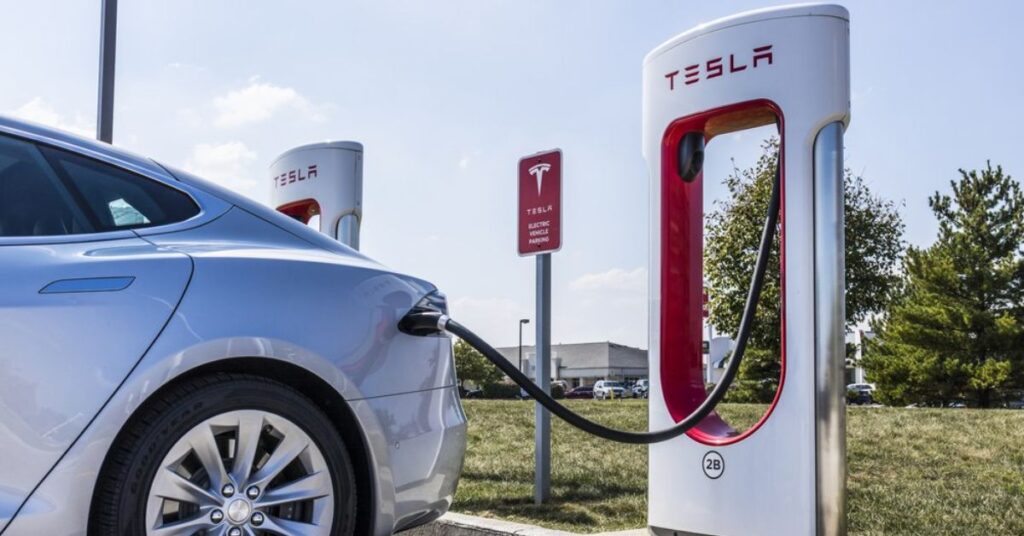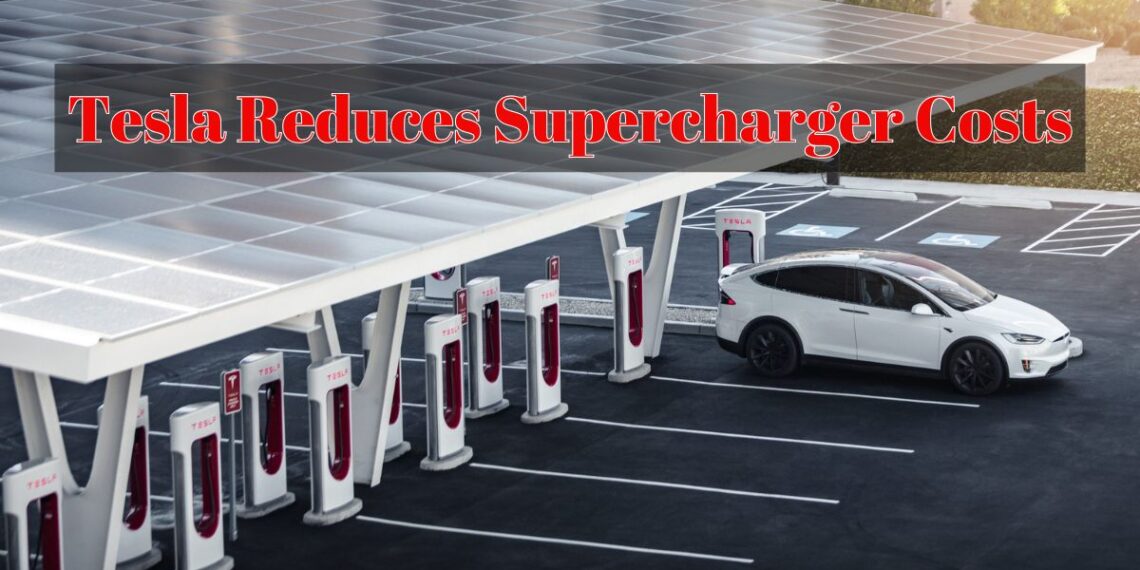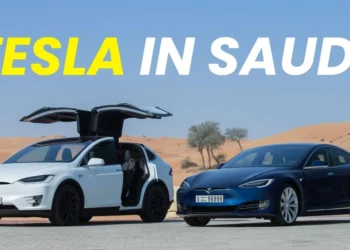Tesla, a leader in the electric vehicle (EV) industry, has announced a reduction in the cost of using its Supercharger network. The company’s decision comes at a time when EV adoption is becoming more widespread, and the cost of operating an electric vehicle has become a key consideration for many consumers. As part of its efforts to make electric vehicles more accessible, Tesla has reduced Supercharger prices in the United States and Europe, ensuring that more drivers can take advantage of the convenience and speed of the Supercharger network. This move reflects Tesla’s commitment to driving EV adoption while making the cost of charging more affordable.
In this article, we’ll explore the reasons behind these reductions, how they benefit EV drivers, and what they mean for Tesla’s ongoing efforts to drive electric vehicle adoption.
Table of Contents
Why Tesla Reduces Supercharger Costs?

Tesla has been working on making its Supercharger network more accessible and affordable for all EV drivers. The company has focused on lowering prices to accelerate EV adoption. Tesla’s head of charging, Max de Zegher, stated on social media that the price reduction is part of the company’s goal to “price low to accelerate EV adoption,” adding that the move is also “financially sustainable” for expanding the Supercharger network.
Key Factors Behind the Price Reduction
- Cost Efficiencies: Tesla aims to pass on savings from cost efficiencies directly to its customers.
- Network Expansion: Intending to increase Supercharger stations globally, Tesla needs to ensure the network is sustainable.
- Encouraging EV Adoption: By reducing charging costs, Tesla hopes to make EVs more appealing compared to traditional gas-powered cars.
Tesla Supercharger Pricing Reductions Around the World
Tesla owners across North America and Europe have started noticing reductions in Supercharger prices, with some locations seeing decreases of 5 to 10 cents per kilowatt-hour (kWh). In Quebec, for instance, the price dropped from $0.50 per kWh to $0.42 per kWh.
This is a significant move to make EV charging more affordable, especially as Tesla’s Supercharger network reaches new records for usage.
How Much Can You Save on Charging?
- North America: Tesla owners have reported a price reduction of 8-10% at local Superchargers, ranging from 5 to 10 cents per kWh.
- Europe: Some stations in Europe also saw similar reductions in pricing, offering users savings across a variety of locations.
These reductions make Supercharging more cost-effective and continue to offer EV owners a more budget-friendly alternative to gas.
Why Are Tesla Supercharger Costs Being Reduced?
Tesla’s decision to lower Supercharger prices is strategic. The company aims to make its charging network more affordable for both existing Tesla owners and potential customers. By doing so, Tesla is continuing to improve its overall charging infrastructure and attract new EV drivers.
Max de Zegher also explained that Tesla’s goal is to remain financially sustainable while investing in the expansion of its Supercharger network:
“Be financially sustainable to invest in the network, growing dependable freedom to travel.”
This price reduction comes at a time when EV adoption is rising, but the overall market for EVs is facing some challenges. As Tesla works to meet its quarterly vehicle delivery targets, the reduction in Supercharger prices may serve as an incentive for drivers to choose Tesla over traditional gas-powered cars.
There are several reasons for the recent reduction in Supercharger costs:
- Sustainability: As Tesla works to expand its network, reducing costs ensures it remains financially viable.
- Competing with Gas Vehicles: With rising fuel prices, reducing EV charging costs makes electric cars even more attractive.
- Increasing Adoption: As more people switch to EVs, lowering charging costs accelerates the adoption rate of electric vehicles.
The Future of Tesla Superchargers
Tesla’s Supercharger network is expanding rapidly, with over 40,000 charging stations globally. This network enables long-distance travel for Tesla drivers, making it easier for them to go on road trips without worrying about running out of battery. However, the cost of charging has risen over the past year due to external factors like the global energy crisis.
Tesla is committed to making EVs more affordable in the long run, and part of this commitment involves controlling the price of Supercharging. In addition to lowering prices, Tesla has also started implementing time-of-day pricing at certain stations to alleviate congestion and further control costs for users.
How Tesla’s Supercharger Price Reduction Benefits EV Owners
The price reduction at Supercharger stations provides several key benefits for EV owners:
- Lower Charging Costs: As prices decrease by up to 10 cents per kWh, it becomes cheaper to charge a Tesla on long trips.
- More Accessible Charging: The wider availability of affordable charging makes owning and operating a Tesla more feasible for people in various regions.
- Incentive to Choose EVs: The price cuts may encourage more people to transition from gas-powered cars to electric vehicles, furthering Tesla’s mission to promote sustainable energy.
Tesla’s Continued Investment in Charging Infrastructure
Tesla is not only reducing prices but also continuing to invest in its charging network. The company is expanding its infrastructure to support the increasing number of EVs on the road. As of November 2023, Tesla’s Superchargers in North America delivered a record 12 gigawatt-hours (GWh) of energy, demonstrating the growing demand for charging services.
Global Impact of Tesla’s Pricing Changes
Tesla’s price reductions are being observed not only in the U.S. and Europe but also in other regions where the company is expanding its Supercharger network. As more non-Tesla vehicles are allowed to use the network, price reductions could be crucial for maintaining Tesla’s competitive edge in the electric vehicle market.
Conclusion
Tesla’s decision to reduce Supercharger costs marks an important shift in its approach to EV adoption. By lowering the cost of charging at Supercharger stations, Tesla is making electric vehicles more affordable and accessible to a broader audience. This price reduction not only benefits Tesla owners but also serves as an important step in encouraging more people to adopt EVs. Tesla’s commitment to reducing Supercharger prices, coupled with its expansion of the charging network, will likely help accelerate the global shift towards sustainable energy and transportation.
Read more: EVs Take Record Breaking 94.9% Share in Norway: A Global EV Milestone
FAQs
Why has Tesla reduced Supercharger prices?
Tesla reduced prices to make EV charging more affordable and to accelerate EV adoption. The move also helps the company remain financially sustainable as it invests in expanding its Supercharger network.
How much have Tesla Supercharger prices dropped?
Prices have dropped by up to 10 cents per kWh, with reductions ranging between 5% to 10%, depending on the location.
Is it cheaper to charge at home or Tesla Superchargers?
Charging at home is generally much cheaper. For example, home charging costs around $0.09 per kWh, while Supercharging can cost up to $0.50 per kWh, though recent price cuts have helped lower these costs.
Will Tesla Superchargers remain a major part of the company’s business?
Yes, Tesla is continuing to expand its Supercharger network and views it as a key element of its business. The company is also making efforts to make charging more affordable and sustainable.
How can I find the latest Tesla Supercharger prices in my area?
Tesla owners can view current Supercharger prices directly through the car’s navigation system, which displays local pricing.
Are Tesla Superchargers available to non-Tesla EVs?
Yes, Tesla has started opening its Supercharger network to non-Tesla electric vehicles in certain regions, expanding accessibility to more EV owners.
Can I use Tesla Superchargers for everyday charging?
While Superchargers are an excellent option for long trips, it is generally more cost-effective to charge at home for daily use.







